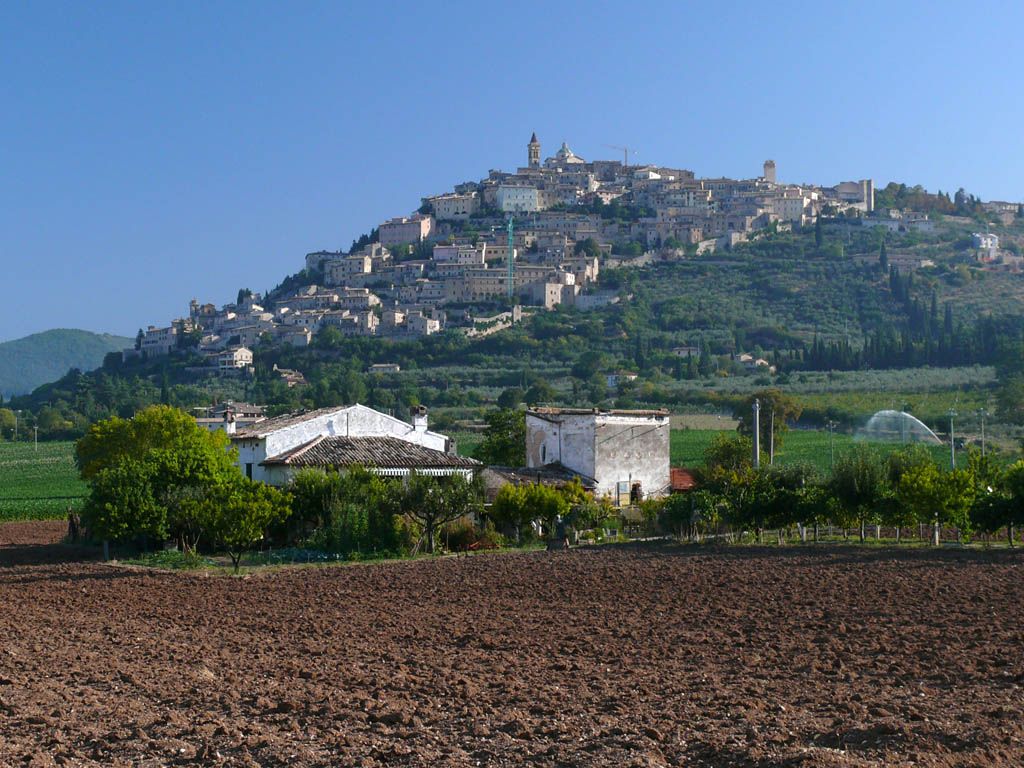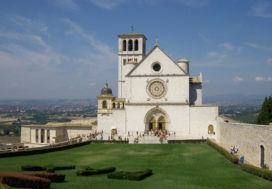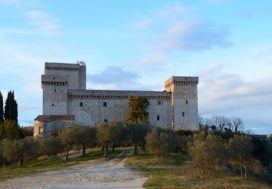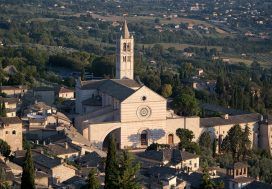Spello, skimmed by the Augustan Walls for two kilometres
When you visit Spello, the most striking aspect is noticing what it looks like being a whole with Mount Subasio, the mountain of St. Francis.
Its lovely old town then looks like an elegant necklace that wonderfully drapes this place, which has been founded by the Umbrians later to become an important Roman settlement.
Many architectonic models, such as Porta Consolare, Porta Ubica, Porta Venere and Porta dei Cappuccini, not to forget the Augustan Walls, longer than two kilometres, testify its ancient and important glory. Then the Town Hall, the Baglioni Palace and the Urbani Palace but also the Tega Chapel are all examples that deserve to be admired.
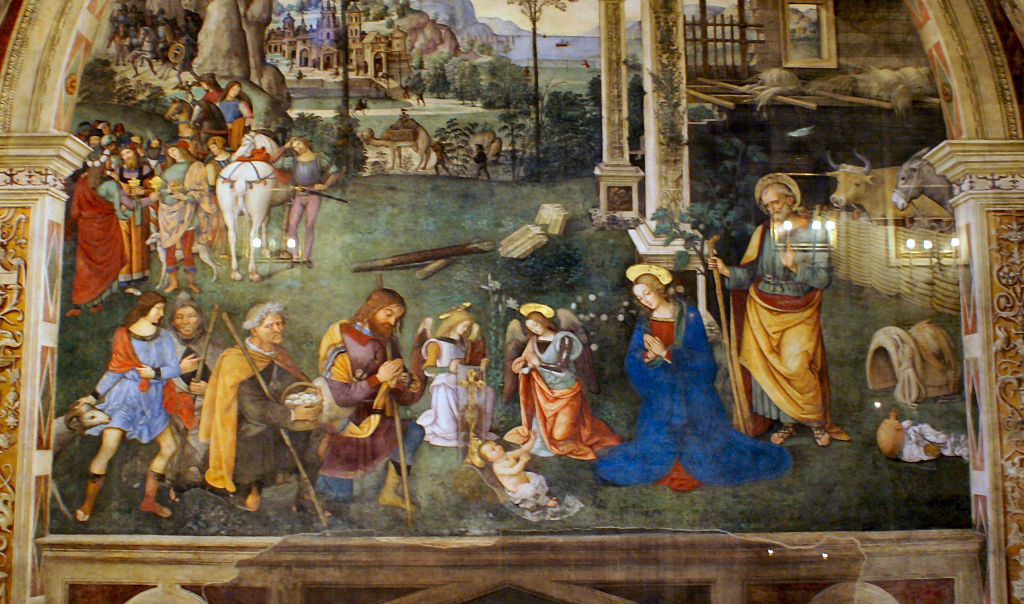
Nativity by Pinturicchio
Walking along via Cavour, the main road of Spello you will come across Santa Maria Maggiore, a wonderful example of religious architecture. Here, even after being amazed by its medieval and finely carved portal, the true surprise is held inside: the Baglioni Chapel. This chapel was garnished by one of the most joyful and colourful series of frescoes realized by Pinturicchio. It was painted in 1501 for the Baglioni lineage, and it is focused on the Jesus’s birth and childhood.
The Church of St. Andrew, the Church of St. Lawrence, the Church of St. Claude are all remarkable religious buildings, too. If you visit Spello, you must not miss Villa Fidelia, Villa Costanzi, as well as the Town Art Gallery, abundant of artworks from the Fifteenth to the Eighteenth Century.
Montefalco, the hamlet named after the hawks
Montefalco in Umbria in the district of Perugia, also known as “a small piece of heaven”, is the native soil of eight Saints. In ancient times, it was known as Cors Coronae, and it took its current name, according to a local legend, after Emperor Frederic II of Swabia visited the village during the XIII Century, when he decided to change its name into Montefalco for the presence of a large number of hawks.
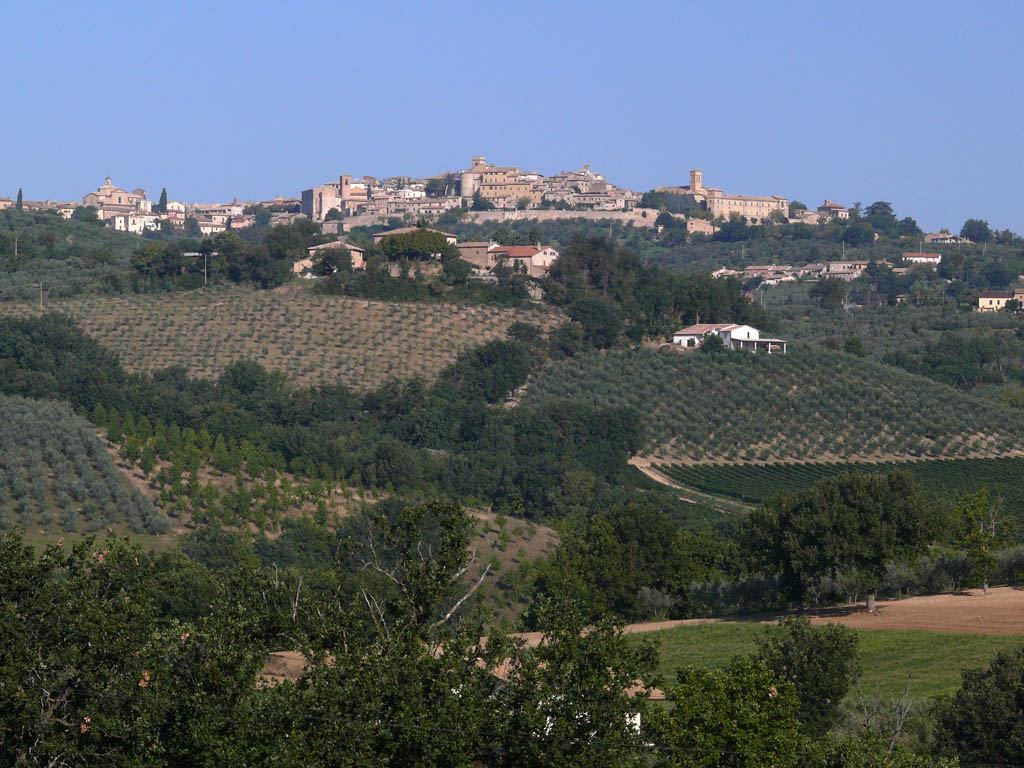
Montefalco views
The Town Square is surrounded by the most important building of Montefalco, most of which was built between the Sixteenth and the Seventeenth Century, such as the Town Hall, and the Church of St. Mary. The Church of St. Augustin, dating back to the XIII Century, preserves many precious fourteenth-century testimonies. Here there are the bodies of the Blessed Pellegrino and the Blessed Illuminata and Chiarella.
Among many other testimonies, there are the Museum Complex of St. Francis, the Sanctuary Church of St. Clare, the Church of St. Lucy as well as the Church of St. Bartholomew. Moreover, just few kilometres from the center of Spello, you can enjoy the Castle of Fabbri, which dates back to the XIV Century.
Trevi, a small hamlet rich of history
Founded by the Umbrian, Trevi also located in the district of Perugia, acquired much weight with the Roman. It became an Episcopalian, and afterwards, the Lombard occupied it. After many conflicts against the nearby villages, Trevi belonged again to the papacy during the Sixteenth Century, to follow then its vicissitudes until the unification.
Nowadays, this lovely ancient town offers all its visitors amazing vestiges, which document its incredible past, deserving full membership to the Most beautiful villages Club. Coming up towards the old town, you will come across the Sanctuary of the Madonna of the Tears, while Mazzini Square represents the core of the town, with its Town Hall from the XIII Century, and its historic City Tower.
Regarding to the Clitunno Theatre, it is a beautiful work coming from the XIX Century. Of particular interest, is Petrucci House, an elegant Renaissance building, as well as the Church of San Giovanni Decollato, a brilliant example of neoclassical style. On the other hand, the Church of St. Francis is Gothic, from the XIV Century. There is a museum complex, attached to the church, in which there are precious paintings coming from the XIV to the XVII Century. Of remarkable value, are the Chapel of San Girolamo, the Church of the Crucifix, Lucarini Palace, and Valenti Palace, where one of the most ancient and precious Umbrian archaeological collection is preserved.



